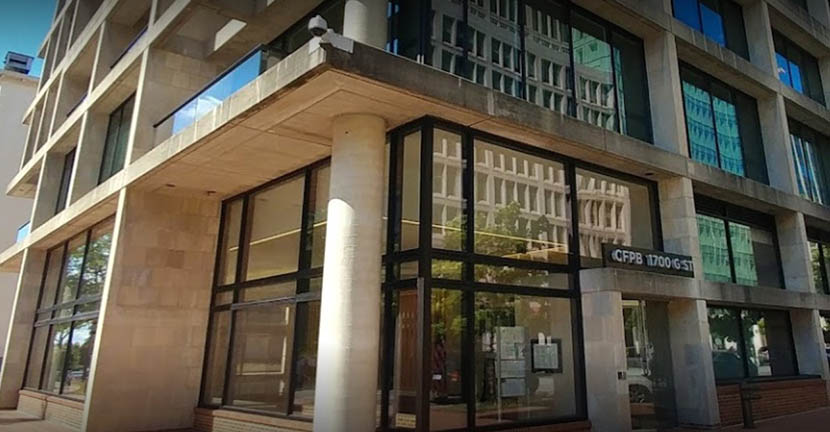
CFPB Issues Notices of Rulemaking to Address GSE ‘Patch’

The Consumer Financial Protection Bureau Monday issued two Notices of Proposed Rulemaking to address the impending expiration of the Government-Sponsored Enterprises Patch, also known as the GSE Patch, which affects nearly one million mortgage loans.
The GSE Patch, created as part of the Dodd-Frank’s amending the Truth in Lending Act, is scheduled to expire in January 2021 or when Fannie Mae and Freddie Mac exit conservatorship, whichever comes first.
The proposed rulemakings would replace the current GSE Patch, which makes GSE Qualified Mortgage loans eligible for QM status–even if their debt-to-income ratio exceeds 43 percent—with a “price-based” approach.
“The GSE Patch’s expiration will facilitate a more transparent, level playing field that ultimately benefits consumers through promoting more vigorous competition in mortgage markets,” said CFPB Director Kathleen L. Kraninger. “The Bureau is proposing to replace the Patch with a price-based approach to QM loans to preserve consumer access to mortgage loans while also making sure consumers have the ability to repay them. The Bureau is committed to ensuring a smooth and orderly mortgage market throughout its consideration of these issues and any resulting transition away from the GSE Patch.”
Mortgage Bankers Association President and CEO Bob Broeksmit, CMB, issued a statement. “MBA appreciates the CFPB’s proposed changes to the QM Rule and extension of the GSE Patch,” Broeksmit said. “As proposed, the regulatory changes would seek to ensure creditworthy borrowers have access to sustainable mortgage credit without disruption to the overall mortgage market. MBA looks forward to reviewing and commenting on both rules, and we will continue to work with policymakers and all other stakeholders to ensure borrowers are both protected and have access to credit throughout the mortgage lending process.”
TILA establishes ability-to-repay requirements for most residential mortgage loans. It identifies factors a creditor must consider in making a reasonable and good faith assessment of a consumer’s ATR. TILA also defines a category of loans called qualified mortgages, which are presumed to comply with the ATR requirements.
The Bureau completed an ATR/QM rule that established a general QM standard for loans where the consumer’s debt-to-income ratio is 43 percent or less and the loan meets the other statutory QM requirements. The ATR/QM rule also created the GSE Patch as a temporary QM definition that also provides QM status to certain mortgage loans eligible for purchase or guarantee by either of the GSEs. These Temporary GSE QM loans are eligible for QM status even if the DTI ratio exceeds 43 percent.
Last year, the Bureau released an assessment of its ATR/QM Rule and found that Temporary GSE QM loans represent a large and persistent share of mortgage originations. With expiration approaching and absent regulatory action, the Bureau estimates that 957,000 mortgage loans would be affected by the expiration of the GSE Patch. The Bureau estimates that, after the Patch expires, many of these loans would either not be made or would be made but at a higher price.
Kraninger said in releasing the two NPRMs, the Bureau is “taking steps to ensure a smooth and orderly transition away from the Temporary GSE QM loan definition and to maintain access to responsible, affordable mortgage credit upon its expiration.”
In the first NRPM (https://files.consumerfinance.gov/f/documents/cfpb_proposed-rule_general-qm-loan-definition_2020-06.pdf), the Bureau proposes to amend the General QM definition in Regulation Z to replace the DTI limit with a price-based approach. The Bureau said it is proposing a price-based approach because it preliminarily concludes that a loan’s price, as measured by comparing a loan’s annual percentage rate to the average prime offer rate for a comparable transaction, is a strong indicator and more holistic and flexible measure of a consumer’s ability to repay than DTI alone.
For eligibility for QM status under the General QM definition, the Bureau is proposing a price threshold for most loans as well as higher price thresholds for smaller loans, which is particularly important for manufactured housing and for minority consumers. The NPRM also proposes that lenders take into account a consumer’s income, debt, and DTI ratio or residual income and verify the consumer’s income and debts.
In the second NPRM (https://files.consumerfinance.gov/f/documents/cfpb_proposed-rule_qm-patch-extension_2020-06.pdf), the Bureau proposes to amend Regulation Z to extend the GSE Patch to expire upon the effective date of a final rule regarding the first notice’s proposed amendments to the General QM loan definition in Regulation Z. The Bureau is proposing to take this action to ensure that responsible, affordable credit remains available to consumers who may be affected if the GSE Patch expires before the amendments take effect as defined in the first NPRM.
